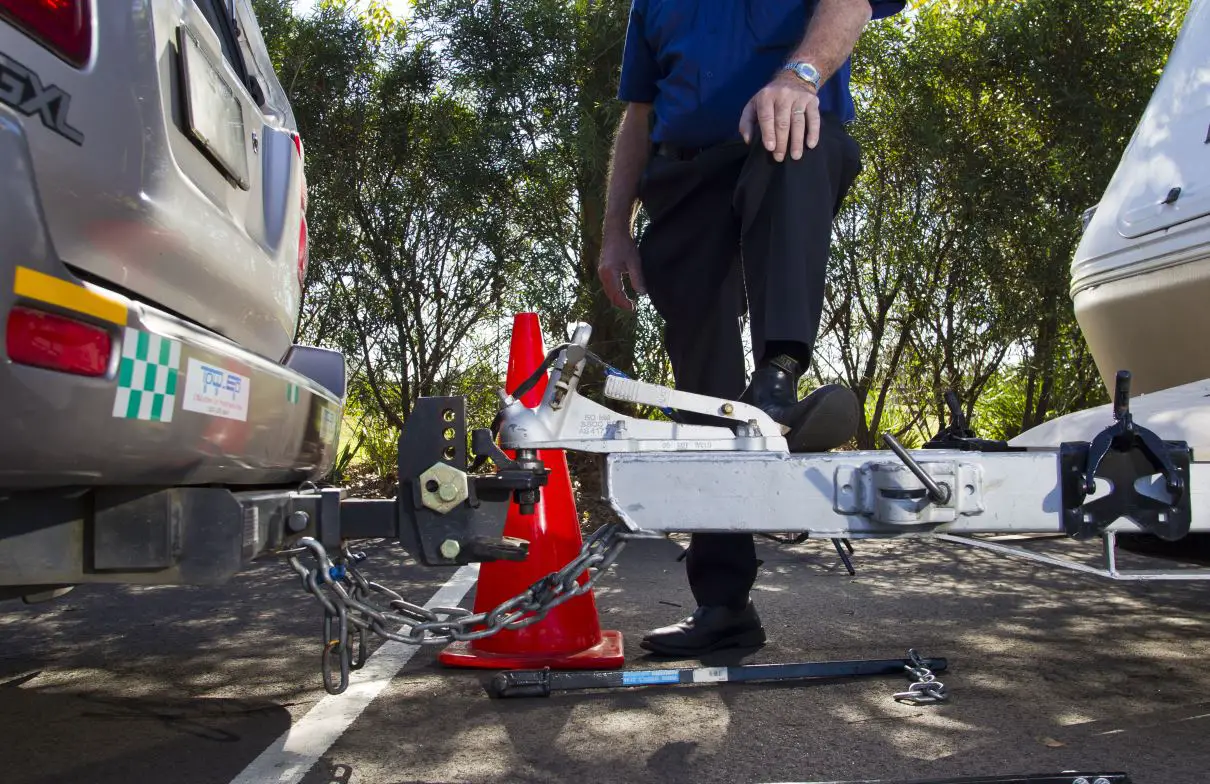Ultimate 10-Step Guide: Hitching Up
Getting ready to hit the road and live the dream? Make sure to read our 10 top tips for the perfect hitch every time!
1. Periodically check that the bolts securing the towbar to the tow vehicle are tight. These can work loose, especially after long distances over corrugated outback roads.
2. Check that the towball or tow pin is tightly secured. I’ve seen these so loose that the large securing nut can be unscrewed by hand.
3. Check that the trailer coupling has been locked onto its towball or tow pin. This can be easily missed and, if not locked on, the trailer can easily pop off the towball.
4. Check that the receiver hitch pin is secured with an R-clip, lynch-pin or suitable aftermarket locking device.
5. If your caravan has two safety chains make sure that they cross over underneath the coupling rather than connect on the same side. Having them crossed over means that they can be made shorter so that they won’t drag on the ground as easily. It also means that they will be able to catch and hold the A-frame should the tow coupling separate from the towbar.
6. Only use rated shackles, with a Working Load Limit (WLL) or Safe Working Load (SWL) rating stamped on the body, to connect the trailer’s safety chains to the tow vehicle. The breaking load limit (BLL) of these shackles must be at least 1.5 times greater than the ATM of the trailer. As the BLL for rated shackles is 6 times their WLL/SWL rating, the minimum WLL/SWL will be the ATM÷4.
7. To ensure that the emergency brake cable will do its job even if the towbar is ripped off, make sure that it’s attached to some part of the vehicle that is completely separate from the towbar such as the rear bumper bar.
8. Check that all your trailer lights work correctly, especially the left and right turn indicator lamps. On 7-pin and 12-pin flat connectors, the pins for these lamps are on the far ends of the connector and are often squeezed together when wriggling the plug out of the socket. Use an up-and-down motion rather than a side-to-side motion to remove the plug.
9. If using a WDH, check that it’s adjusted correctly for the load that you currently have in the van. Usually a different setting will be required when the van is empty to when it is loaded. The correct setting will have the same distance between the front wheel arches and the wheel rims before and after the van is attached.
10. If using a WDH, check that you have enough free links in the load chains. This is to prevent the bars binding during normal turns. It also ensures that the trailing ends of the spring bars are not so close to the ground that they scrape when going over a small ditch.
To see how Caravan & Motorhome tech expert, Grant Hanan, hitches up his rig quickly and securely - watch below!


